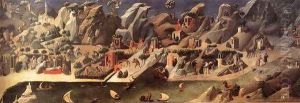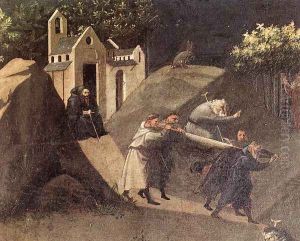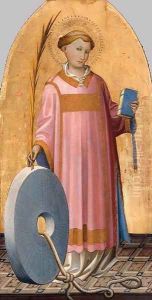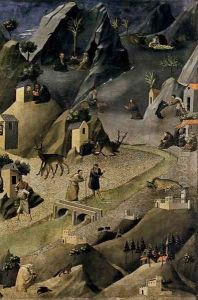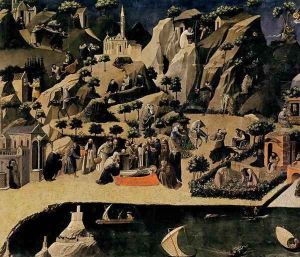Gherardo Di Jacopo Starnina Paintings
Gherardo di Jacopo Starnina, often simply known as Starnina, was an Italian painter from Florence whose active period was in the late 14th and early 15th centuries. His exact birth and death dates are not precisely known, but he is believed to have been born around 1360 and to have died around 1413.
Starnina was thought to have trained under Antonio Veneziano and later worked with Agnolo Gaddi, which indicates that he was part of the Florentine school that descended from Giotto. His style, however, shows significant development beyond the rigid and formulaic patterns of earlier Florentine painting. He is particularly noted for his expressive figures and vibrant use of color.
The artist's career took him beyond Florence, and he is recorded to have been in Valencia, Spain, from 1390 to about 1409. During his time in Spain, Starnina's work had a profound influence on the development of International Gothic there. His Spanish period is characterized by elegant, elongated figures and an increased interest in ornamentation and the effects of light, which would become a hallmark of the International Gothic style.
Unfortunately, much of Starnina's work has not survived, but what remains demonstrates his contribution to the evolution of late Gothic painting. His return to Florence brought these sophisticated stylistic developments with him, and he is credited with influencing younger artists, such as Lorenzo Monaco and even, indirectly, the early Renaissance master Masaccio.
Despite his importance, Starnina was somewhat overlooked in art history until the late 19th and early 20th centuries when art historians like Bernard Berenson began to re-evaluate his role and contributions to the early Renaissance. Today, while not as widely recognized as some of his contemporaries, Starnina is acknowledged as a significant figure in the transition from Gothic to Renaissance art in Italy.
